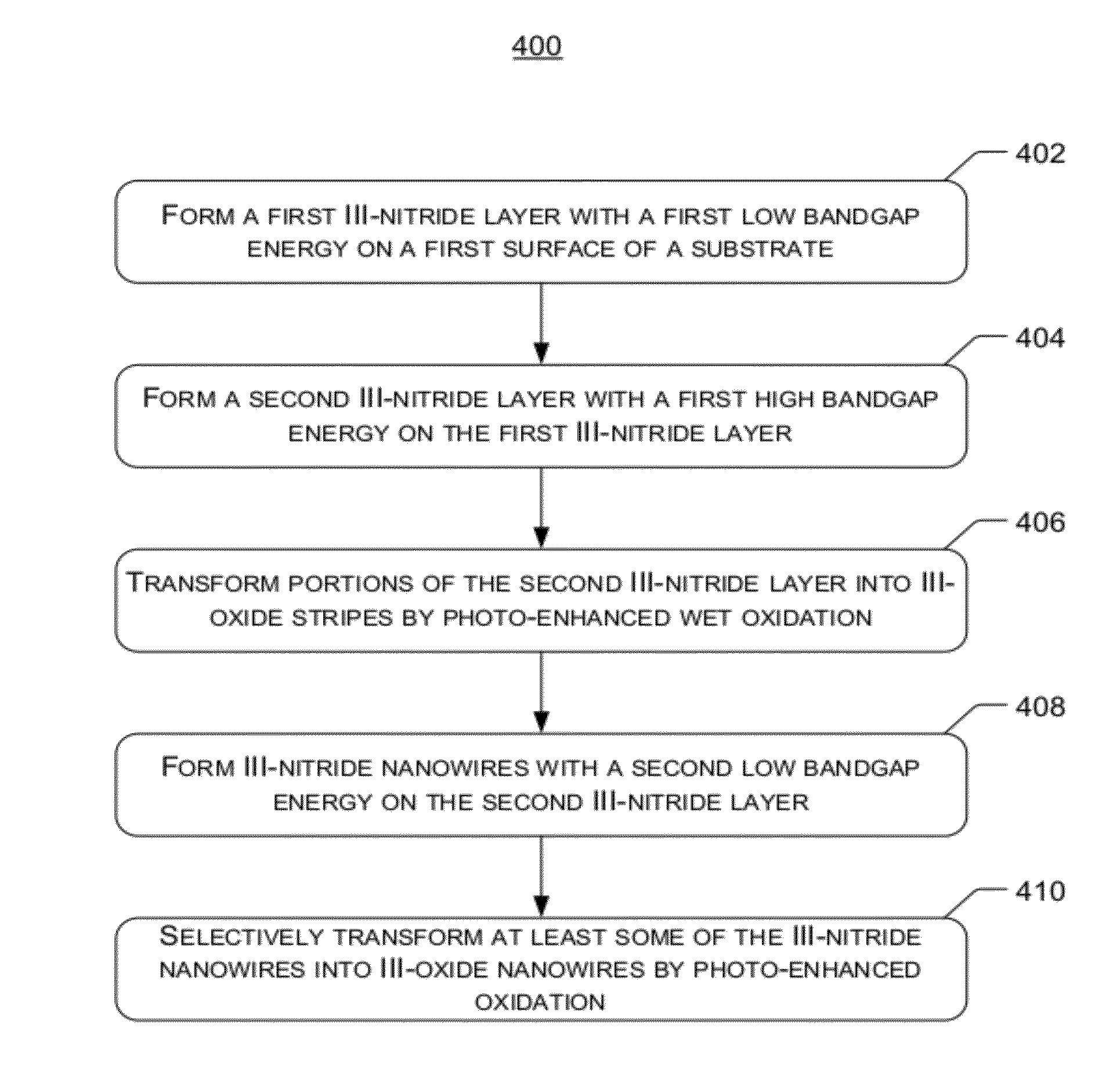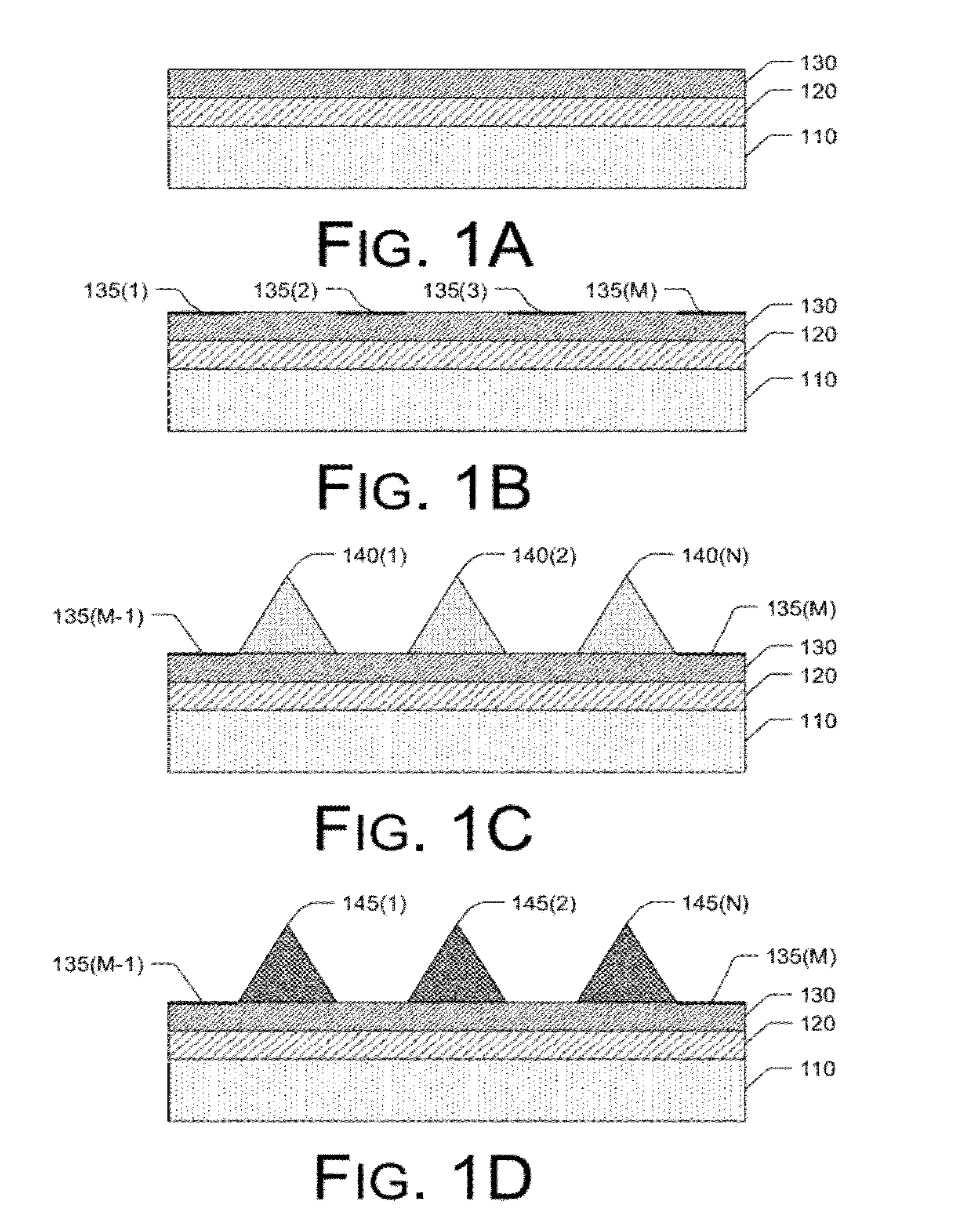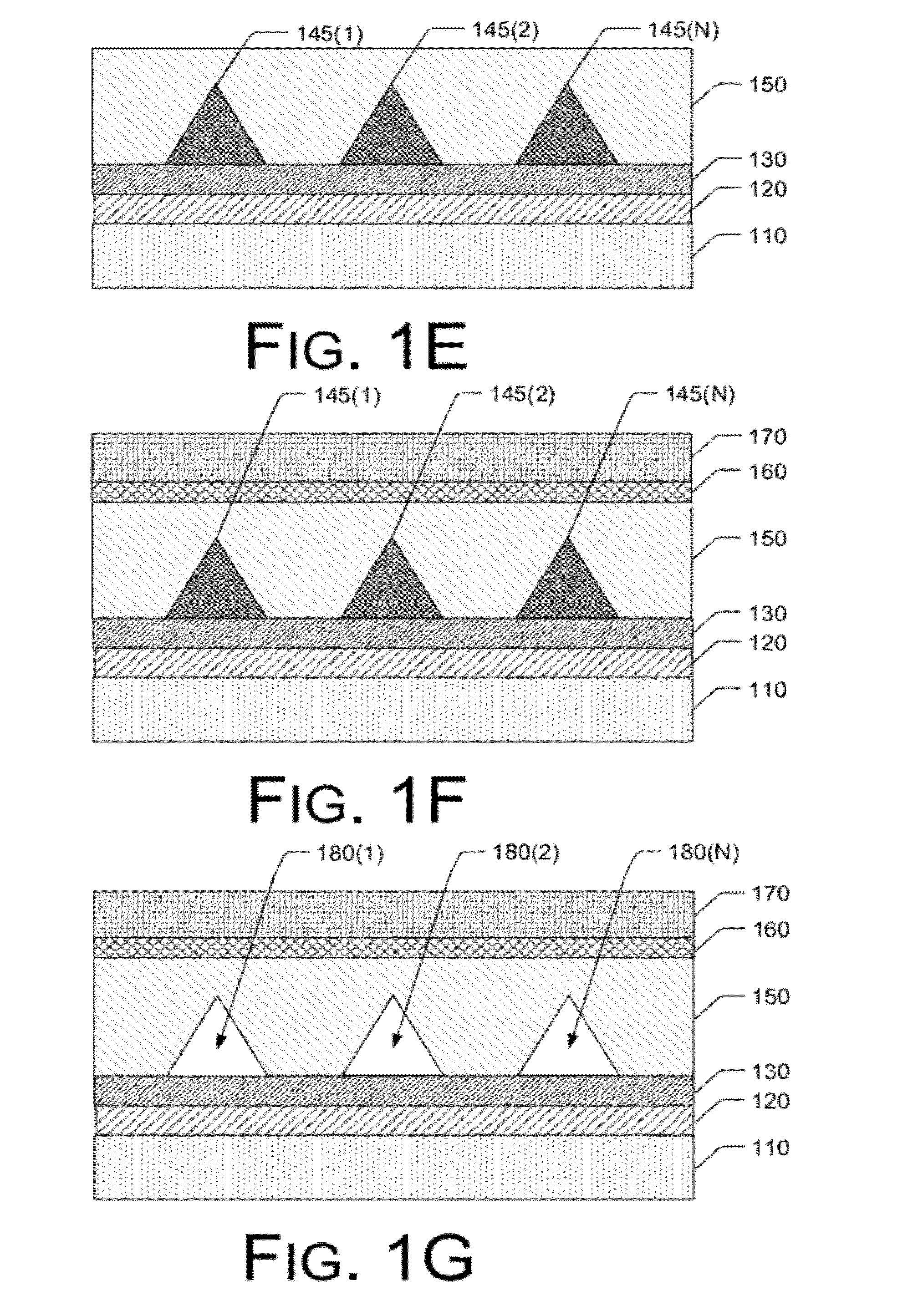Method of Selective Photo-Enhanced Wet Oxidation for Nitride Layer Regrowth on Substrates
a technology of nitride and wet oxidation, which is applied in the direction of semiconductor/solid-state device manufacturing, semiconductor devices, electrical devices, etc., can solve the problems of serious material contamination issues to the growth of nitride layers thereafter, and the efficiency and technological maturity of ingan-gan blue/green devices have not yet been reached, so as to achieve high bandgap energy
- Summary
- Abstract
- Description
- Claims
- Application Information
AI Technical Summary
Benefits of technology
Problems solved by technology
Method used
Image
Examples
Embodiment Construction
Overview
[0037]Various embodiments of the present disclosure pertain to techniques of selective photo-enhanced wet oxidation in fabrication of LED structures and in suppression of propagation of screw dislocations in LED structures.
[0038]In a semiconductor structure where a layer of III-nitride with low bandgap energy Eg,Lo and a layer of III-nitride with high bandgap energy Eg,Hi are deposited one above the other, selective photo-enhanced wet oxidation with a photonic energy hγ, where Eg,Log,Hi, can transform III-nitride compounds with Eg,Lo into III-oxide compounds. This technique can be utilized to form III-oxide nanowires over the layers of III-nitride. Lateral expitaxy of a new layer of III-nitride over the existing layers of III-nitride and III-oxide nanowires can then be achieved by MOCVD. Afterwards, air gaps can be formed by dissolving the III-oxide nanowires using an acidic electrolyte or a basic electrolyte. The air gaps provide crystal lattice momentum for optical diffrac...
PUM
| Property | Measurement | Unit |
|---|---|---|
| wavelengths | aaaaa | aaaaa |
| inclined angle | aaaaa | aaaaa |
| inclined angle | aaaaa | aaaaa |
Abstract
Description
Claims
Application Information
 Login to View More
Login to View More - R&D
- Intellectual Property
- Life Sciences
- Materials
- Tech Scout
- Unparalleled Data Quality
- Higher Quality Content
- 60% Fewer Hallucinations
Browse by: Latest US Patents, China's latest patents, Technical Efficacy Thesaurus, Application Domain, Technology Topic, Popular Technical Reports.
© 2025 PatSnap. All rights reserved.Legal|Privacy policy|Modern Slavery Act Transparency Statement|Sitemap|About US| Contact US: help@patsnap.com



